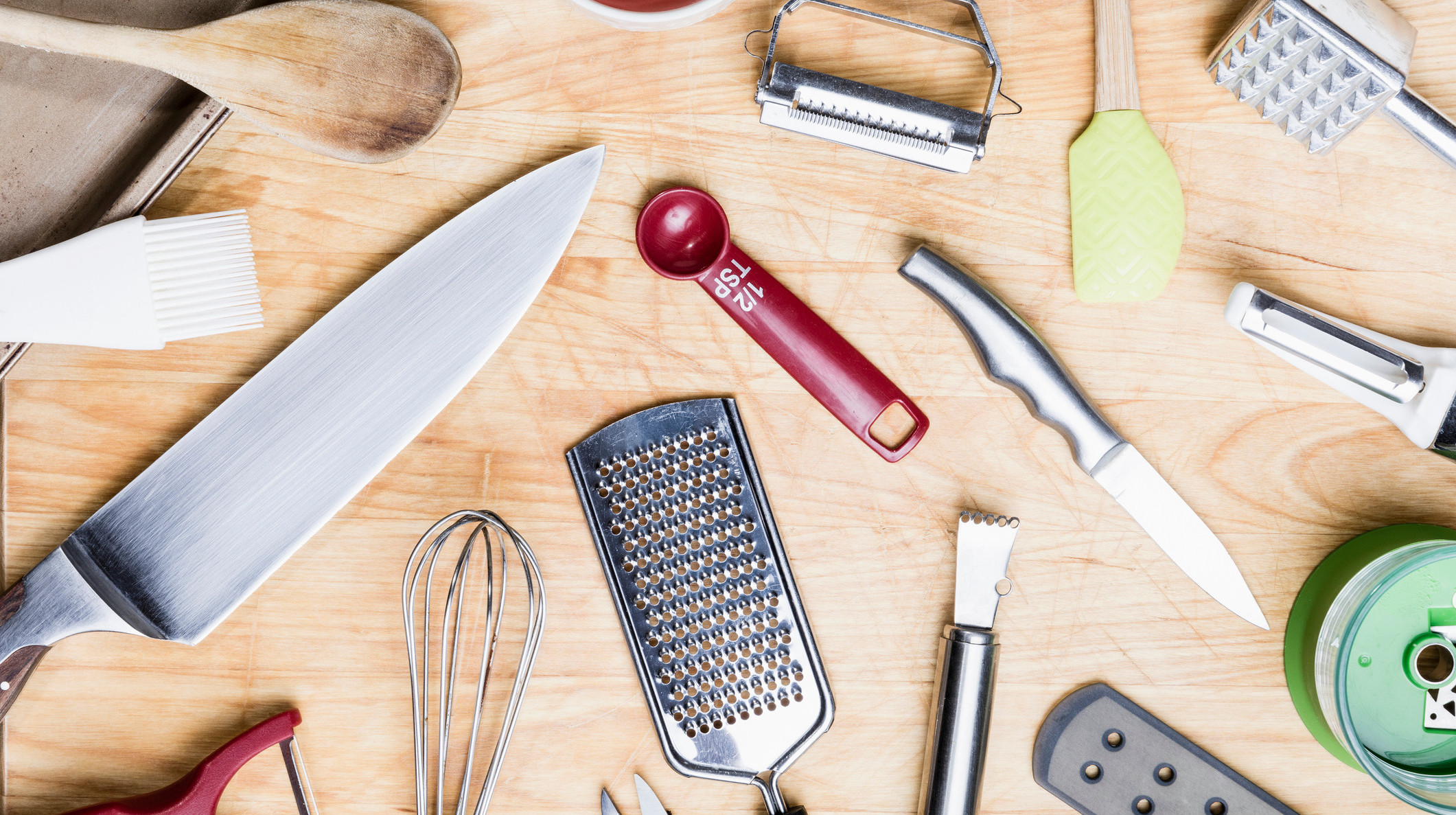These Kitchen Tools Are Dirt Cheap, And We Use Them Constantly
There's a reason you don't see professional chefs' kitchens cluttered with sensational, candy-colored as-seen-on-TV products: cooking gadgetry tends to be designed for one highly specific application (pancake flipping! baked potato microwaving!), and useless for just about anything else you'd want to do. No, it's the simple, versatile kitchen tools that cooks return to again and again, and most often there's nothing fancy about them at all. They get the job done, and that's more than enough. Here are some of our cheapest, most battered-to-hell go-to utensils, and what we use them for.
My cheap-ass wooden spoon
I like throwing a bunch of junk into a big pot and seeing what happens. Before I moved to my current apartment, which has a glorious gas stove, my penchant for stews led to a lot of overflowing pot mishaps. My last place had this freaky cursed electric stove that would either take 20 minutes to heat your water to a rolling boil or send scalding water shooting across the kitchen (Old Faithful-style) in under three seconds. That's where I picked up the old wooden spoon trick: Just place a wooden spoon across the top of a boiling pot to keep it from boiling over. As a noted woman of science, I know the wood destabilizes the bubbles when they hit the spoon's naturally water-repelling surface. But as a superstitious woman of hillbilly experience, I generally chalk it up as "just one of those things." You can use a crappy wooden spoon for all sorts of things, like packing spinach into a blender, squishing a stray pantry moth, or prodding a chunky beagle who is napping on your pile of grocery bags. Either way, I look forward to my semi-annual pilgrimage to Family Dollar, where I pick up a pack of four cheapies for a buck. It's no European chili paddle, but I kind of like it that way. —Lillian Stone, staff writer
Wooden chopstick (yes, singular)
The cheapest tool I use in the kitchen is a wooden chopstick. And when I say chopstick, I really do mean one single, lonely chopstick. While I don't have a lot of magic tricks for making Korean food in my kitchen (I eat a shame-inducing amount of frozen pizza and ham sandwiches), my mom showed me a funny little trick a long time ago when it comes to frying food. I don't have a suitable thermometer for oil, since I don't fry often. When it's time to see if the oil is hot enough, you can use any wooden chopstick, though the kind that's tapered toward the end is ideal. Once you think the oil is around deep-frying temperature, dip the tip of the chopstick in the oil. What you're looking for is tiny bubbles streaming up from the tip of the chopstick to the surface of the oil, the size of champagne bubbles. Then you're good to start whatever it is you're frying, like a chair leg or whatever. —Dennis Lee, staff writer
Quart containers
If you've never worked in a professional kitchen, you probably know these as the thick plastic containers that Chinese takeout soup comes in; if you have, you know that quart containers are the bricks with which all professional kitchens are built. They're the only sort of plastic containers I use in my kitchen, since they're uniformly sized, easily stackable, freezer-friendly, dishwasher safe, microwaveable, and can be labeled with masking tape to keep track of what's inside. I use them for storing pantry ingredients like specialty flours and dried beans, freezing homemade stocks, packing up leftovers, organizing smallwares, making cold brew... seriously, I do not know how anybody can function in the kitchen without these things. Though they're not much in the looks department, my husband and I both use quart containers as drinking glasses, because old pro kitchen habits die hard, and also because our cats find it difficult to knock them off the table when they feel like being assholes. What they lack in aesthetics they more than make up for in price: a case of 100 quart containers will normally run you less than 50 bucks. —Allison Robicelli, staff writer
My $9 casserole dish
A long time ago, when I was a starving grad student, I would do just about anything for food, including driving 40 minutes to my dad's cousin Gayle's house to have dinner with her, her husband, their two pre-teenage sons, and their dog, Buddy, a lab-chow mix with a blue tongue and an ungodly loud and high-pitched bark. The adults would bicker, the kids would fight, Buddy would bark and nag to be taken outside, and I would serenely sit and eat Gayle's baked penne alla vodka, which I found absolutely delicious, especially in comparison with my usual diet of potato hash and Kraft mac and cheese. She gave me the recipe, and I went to Publix to buy cheese, noodles, ground beef, Rao's vodka sauce, and taco seasoning. Then I remembered I needed something to cook it in. A blue 9-by-13 Pyrex-like dish caught my eye—not Pyrex, exactly, but close enough. I don't remember now if it was exactly $9, but I know it was definitely cheap because I wouldn't have bought it otherwise. Unlike every other utensil I have bought at a grocery store, it didn't break or need to be replaced after a year or two. In fact, it has continued to serve me well over the years, not just for baked pasta, but also roasted vegetables, brownies, birthday cakes, and many, many other things. Baked pasta recipes come and go, but a casserole dish is forever. —Aimee Levitt, associate editor
